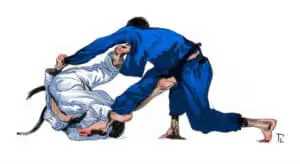You have just started your BJJ journey and now you want to know how do I improve my BJJ and get my first stripe. We will go over all things relating to attaining your first stripe in BJJ.
How long does it take to get your first Stripe in BJJ? Typically it takes between 2-6 months before you receive your first stripe in BJJ. The average time to receive a stripe in BJJ is 3 months. The amount of time it takes to receive a stripe depends on the amount of hours you train, competition results, ability to learn and execute techniques, previous related athletic experience (Judo, wrestling) and your coach’s criteria.
How Many Classes Does It Take To Get A Stripe In BJJ?
How many classes does it take to get a stripe in BJJ? It takes between 24-72 classes to receive a stripe in BJJ. The average amount of classes you need to attend to receive a BJJ stripe is 36. This is based on attending class 3 times a week for 3 months.
It isn’t quite as simple as attending X amount of classes and then receiving a stripe. Stripes are based on technical proficiency. If you attend 100 classes but you don’t make any improvements in your technique your coach should not give you a stripe. However if your coach can’t help you improve after 100 classes that says more about their coaching than it does about you.
The brain and body take time to learn new movements and techniques. Therefore it is more effective (if you are a beginner) to space your training out. Instead of training twice a day everyday it is more effective to train once a day five days a week otherwise you risk burning out your body and overstimulating your brain, making it very difficult to retain any of the new techniques you just learned.
What Is A Stripe In BJJ?
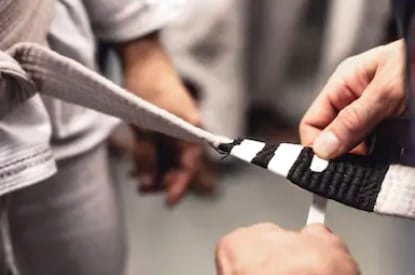
What is a stripe in BJJ? A stripe in BJJ is a white piece of tape or cloth that goes around your belt. It is used to indicate a BJJ athlete’s skill and experience. For example a white belt with 3 stripes is more experienced than a white belt with 1 stripe. Stripes are awarded by coaches and used as marks of progression. An athlete can receive a total of 4 stripes before they are ready to progress to the next BJJ belt.
It takes a long time usually years to receive belts in BJJ. To keep students motivated and to reward progress stripes were created. Belts can be described as long term goals while stripes can be described as medium/short term goals. BJJ stripes are also helpful tool for coaches to track the progress of their students. At large schools it can be hard to track the progress of all their students so stripes can help ensure no student gets left behind and misses out on a deserved promotion.
Stripes are a nice way to celebrate your progression in BJJ. It is a great feeling to be acknowledged by your coach and training partners. Many students chase this great feeling and therefore they are a great way for gyms to retain students.
How Do I Get A Stripe In BJJ?
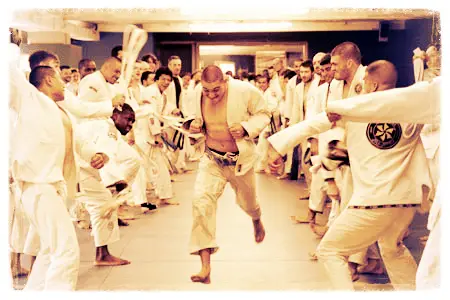
How do I get a stripe in BJJ? To get a stripe in BJJ you need to be given it by your coach. Your coach will evaluate your skill, progression and effort and then determine if you are ready for a stripe. Some schools have set criteria before you can receive a stripe such as being able to perform a certain amount of techniques or compete in a competition. However most schools have no formal criteria and the decision is at your coach’s discretion.
A combination of the following the factors lead to students receiving their first stripe:
Training Time
Training time is an important element in receiving your first stripe in BJJ. BJJ takes a while to learn and therefore you need to train many hours to develop the skill that is representative of the stripe you are trying to earn. It will take on average 54 hours of training time to receive your first stripe. This based on training 3 times a week for 3 months with each training session lasting 1.5 hours. If you are able to get in 54 hours of training within 1-2 months you could receive your first stripe much quicker than most people.
Technical Proficiency
Technical proficiency is the most important criteria you must satisfy to receive a stripe. Stripes are meant to be skill level indicators. Technical proficiency is judged based on your ability to perform BJJ techniques during drilling and rolling. To earn your first stripe in BJJ you will be expected to be able to perform a number of basic techniques with acceptable technique. The techniques you should be able to perform include:
- Hip escape
- Bridge
- Forward/Backward roll
- Establish and escaping guard
- Armbar from guard
- Rear naked choke
- A couple of takedowns
- A couple of passing techniques
- A couple of sweeps
- A couple of mount and side control escapes
- Maintaining back, side control and mount techniques
Here is a list of techniques Roy Dean requires you to know earn a blue belt
To earn your first stripe it won’t be as extensive but it gives you a good idea.
Athletic Background
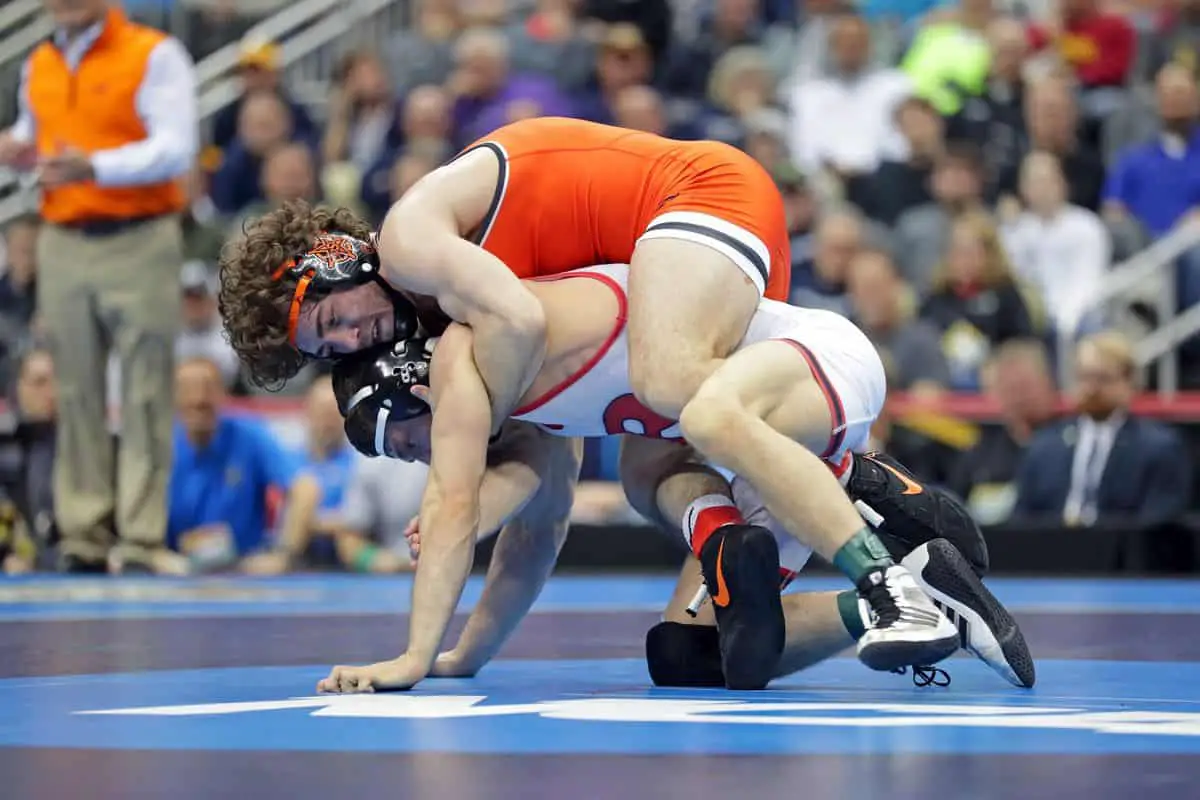
Depending which athletic background you come from can lead you to getting your first stripe at record pace. If you grew up wrestling or have a Judo background you could receive a stripe on your first day of training. I know a former national team Judoka who received his blue belt on his second day of training. There is a large amount of cross over between wrestling, Judo and BJJ. A Judo black belt should already be at a blue belt level in BJJ. The IBJJF acknowledges this by forcing Judo black belts to compete in the blue belt division even if they are a white belt in BJJ.
If you see people at your BJJ gym who come from these backgrounds progressing much faster than you, don’t be discouraged. It is bound to happen due to the similarities between the sports. You should only compare yourself to be people who come from a similar background.
Can Anyone Get A Stripe In BJJ?

Can anyone get a stripe in BJJ? Yes, anyone who trains BJJ consistently for a number of months and tries their best can receive a BJJ stripe. Your coach will appreciate your effort and will reward you with a BJJ stripe. Even though anyone can receive a stripe in BJJ most people won’t as it is difficult to train BJJ 2-3 times a week for month and months.
A BJJ coach understands that everyone in BJJ has different goals and potentials. They will judge people using different criteria. A 20 year old former wrestler who is training everyday and wants to win high level BJJ competitions will be judged based on a much stricter criteria than a 55 year old out of shape accountant who is just looking for a new hobby. If a coach determines you are improving and trying your best no matter who you are they will reward your effort with stripe.
Why Does It Take So Long To Get A Stripe In BJJ?
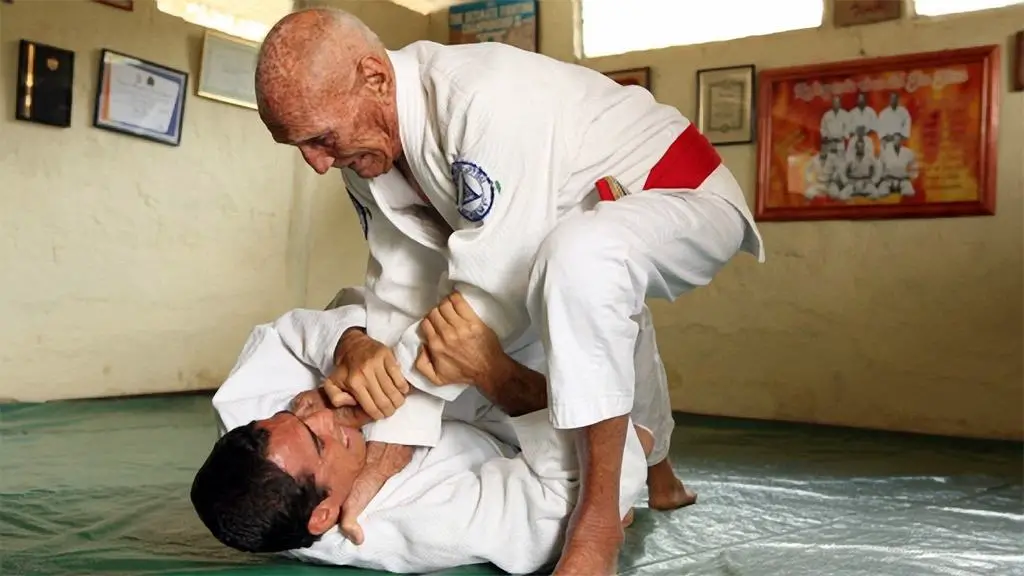
Why does it take so long to get a stripe in BJJ? It takes so long to get a stripe in BJJ because stripes represent skill and BJJ takes a long time to learn and master. BJJ stripes are the equivalent of mini belts. BJJ belts take years to earn and therefore stripes take months to earn.
To ensure BJJ stripes continue have meaning and represent a student’s skill level they can only be awarded if they are truly deserved. It is difficult to continue progressing in BJJ as it requires large amount of dedication perseverance. This is why BJJ stripes will continue be difficult to obtain. But don’t worry the longer something takes to earn the more meaning it has. If you have been training for 6 months, 3 days a week dealing with setbacks and frustration, wondering if you are improving at all and then your coach calls you out in front of the class and slaps a stripe on your belt, you won’t forget it.
How Can I Quickly Get A Stripe In BJJ?
How can I quickly get a stripe in BJJ? A stripe represents skill in BJJ, so to quickly get a stripe you need to improve your BJJ quickly. To improve your BJJ rapidly you should increase your training volume (aim for 6-10 hours a week), take private lessons, take part in competitions, watch instructional DVDs and ask your coach specifically what you need to improve to earn your BJJ stripe.
How Does A Coach Decide Who Gets A Stripe In BJJ?
How does a coach decide who gets a stripe in BJJ? A coach decides who gets a stripe based on who they think has been training hard, consistently and making improvements. Some coaches follow a public criteria such as requiring students to be able to perform a certain number of techniques, attend a minimum amount of classes or have competed in a certain amount of competitions. Most coaches use the eye test where they will watch you drilling and rolling and then determine whether or not your skill level warrants you receiving a stripe.
BJJ is much less formal than other martial arts. Individual coaches will decide who gets a stripe based on their own individual criteria. Often this criteria is flexible and not known to the students. The criteria is usually just based on what skill level your BJJ coach thinks you are at based on their observations of you in training.
How Do I Know I Am Getting Better At BJJ?
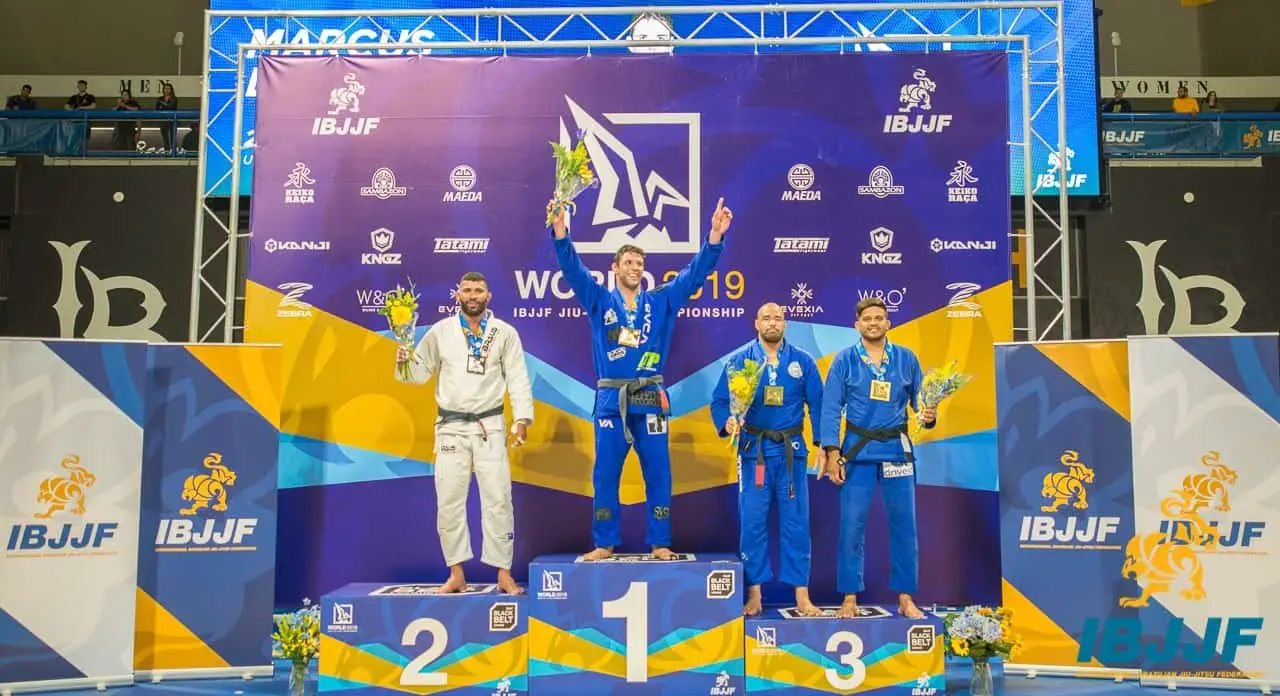
As belts and stripes take a long time to earn in BJJ and maybe you have no immediate plans to compete it can be hard to determine if you are actually getting better or you have plateaued.
How do I know I am getting better at BJJ? The best way to know if you are getting better at BJJ apart from receiving belts and competing is to compare yourself against your training partners. Does that blue belt still tap you 5 times a round? How many times did you tap that brand new white belt? Another way to know if your BJJ is improving is your ability to perform the techniques while drilling and your ability to retain the techniques you have learned.
Competing is a great way to know if you are getting better at BJJ. You get to try your techniques at a 100% intensity against a random opponent. The only problem with judging yourself based on competition is that competing is a skill which needs to be developed. You can’t expect to be great at BJJ competitions without practice.
Also competitions can be random, even though you may compete against people who are the same belt as you you could face people who have significantly more or less experience than you. For example you may have only trained for 3 months and decide to enter a white belt competition only to be quickly tapped in the first round by a white belt who has been training for 2 years. It is only valid to use competition results as a measurement of improvement after you have accumulated a decent sample size of competition matches to compare against.
Don’t Focus On The Stripe
You should not worry about belts or stripes. Belts and stripes are merely symbols. You should focus on what stripes and belts represent….skill. The worst thing you can be in BJJ is a student who doesn’t deserve their rank. Who wants to be a blue belt who drops into a random only to be tapped by most of the white belts. Instead it is much better to be the white belt who can tap blue belts. So don’t rush the process just focus on enjoying your training, executing the techniques correctly during drilling and rolling and before you know it months will fly by and you will have more stripes on your belt than you will know what to do with.
Conclusion
BJJ is a long journey filled with many ups and downs. It can often feel like you are putting in so much effort over a long period of time for little to no reward. However don’t give up. If you train consistently and try your best at each training session you will make big improvements and earn your first stripe in BJJ in 2-6 months.
